

— Blogs —
—Products—
 Consumer hotline +8618073152920
Consumer hotline +8618073152920 WhatsApp:+8615367865107
Address:Room 102, District D, Houhu Industrial Park, Yuelu District, Changsha City, Hunan Province, China
Product knowledge
Time:2025-07-30 21:21:33 Popularity:714
A remote solar outdoor weather station is a self-sustaining, solar-powered device designed to monitor and record various atmospheric and environmental conditions in real-time. These weather stations are typically deployed outdoors, especially in remote areas that lack electricity or are difficult to maintain, and they are equipped with wireless communication functions that transmit data to users via apps, websites, or dedicated consoles. Powered by solar panels and backup batteries, these stations operate independently of traditional power sources, making them ideal for continuous monitoring in various environments. The "7-in-1" designation refers to the station's ability to measure seven key weather parameters: wind speed, wind direction, temperature, humidity, atmospheric pressure, rainfall, and solar radiation. The system supports remote data transmission and is widely used in weather forecasting, environmental research, smart agriculture, and more.
- Solar-Powered: Equipped with solar panels and backup batteries, the weather station is self-sustaining and does not require external power sources or frequent battery replacements, making it especially suitable for remote areas.
- Wireless Connectivity: Most models support Wi-Fi, cellular networks, or LoRa communication to transmit real-time data to smartphones, computers, or weather networks (cloud platforms).
- Durable and Weatherproof: Designed for outdoor use, the stations are made from waterproof, dustproof materials and can withstand rain, snow, extreme temperatures, and UV exposure, typically having high IP ratings (e.g., IP6X).
- High Accuracy with Frequent Updates: Advanced sensors provide precise measurements, with data update frequencies as fast as every second, depending on the model.
- Remote Monitoring: Users can access real-time and historical data remotely via apps or online platforms, allowing for monitoring from anywhere at any time.
- Low Maintenance: Many modern weather stations use sensors without moving parts (e.g., ultrasonic wind speed sensors), reducing wear and maintenance needs.
- Multi-functionality: Supports additional sensors (e.g., soil moisture, air quality PM2.5/PM10) and can seamlessly integrate with PLCs, data loggers, and other control systems to enhance functionality.
- Function: Measures wind speed near the ground, usually in meters per second (m/s) or miles per hour (mph).
- Types: Common types include cup anemometers (e.g., three-cup design, durable) and ultrasonic sensors that use sound waves for high accuracy with no moving parts.
- Applications: Used in weather forecasting, wind energy assessments, and monitoring storm conditions.
- Function: Determines the wind's direction, usually represented in 8 directions or 360-degree increments.
- Types: Traditional vane-style sensors or ultrasonic sensors, requiring alignment with true north for accuracy.
- Applications: Supports pollution dispersion predictions, aviation safety, and agriculture planning for wind pattern analysis.
- Function: Measures the air temperature, typically in Celsius or Fahrenheit.
- Design: Placed inside a radiation shield or Stevenson screen to prevent direct sunlight interference with readings.
- Applications: Used for weather forecasting, agricultural planning (e.g., frost warnings), and monitoring heat stress on livestock or crops.
- Function: Measures relative humidity, reflecting the water vapor content in the air.
- Types: Common types include capacitive or resistive sensors, often placed in a radiation shield along with the temperature sensor.
- Applications: Calculates dew point, evaluates plant stress, predicts condensation, and monitors comfort levels for humans and animals.
- Function: Measures atmospheric pressure, typically in millibars or inches of mercury (inHg), and helps predict weather changes.
- Design: Typically integrated into indoor control panels or sensor kits, providing weather and altitude data.
- Applications: Helps predict weather patterns (e.g., falling pressure signals storms) and supports environmental monitoring.
- Function: Measures rainfall amounts, typically in millimeters or inches, and sometimes includes rainfall rate.
- Types: Traditional tipping bucket rain gauges that count the number of bucket tips (e.g., one tip per 0.2mm of rain) or tactile rain gauges using piezoelectric sensors for real-time measurement with no moving parts.
- Applications: Used in agriculture (irrigation planning), flood monitoring, and assessing water accumulation in gardens or farms.
- Function: Measures the intensity of solar radiation (W/m²), sometimes including ultraviolet intensity, capturing received solar energy.
- Types: Silicon photodiode sensors (300-1100nm) for general use, or thermopile sensors (280-3000nm) for higher accuracy, conforming to ISO 9060 standards.
- Applications: Optimizes solar panel placement, monitors crop growth, and supports photovoltaic plant efficiency calculations.
- Function: Monitors both soil temperature and moisture levels, aiding in precise irrigation and crop management, making it a valuable addition for agricultural users.
- Sensor Kit: An integrated unit containing the seven sensors (wind speed, wind direction, temperature, humidity, pressure, rainfall, and solar radiation) which can be customized. These sensors are typically installed on poles or tripods for optimal exposure.
- Solar Panel and Battery: Powers the weather station and charges the backup battery, ensuring continuous operation even in low-light conditions.
- Communication Module: Transmits data to control panels, apps, or online platforms through Wi-Fi, LoRa, or cellular networks.
- Mounting Accessories: Includes poles, tripods, or brackets for secure installation, often with U-bolts or leveling devices to ensure alignment.
- Lightning Protector: Safeguards the equipment from lightning strikes, extending the service life.
- Data Logger: Stores sensor readings at set intervals (e.g., every minute) for historical analysis, often with the ability to export data to SD cards or cloud platforms.
- Protective Enclosure: Weatherproof enclosures (e.g., IP65 rating) protect the sensors from environmental damage while ensuring accurate measurements.
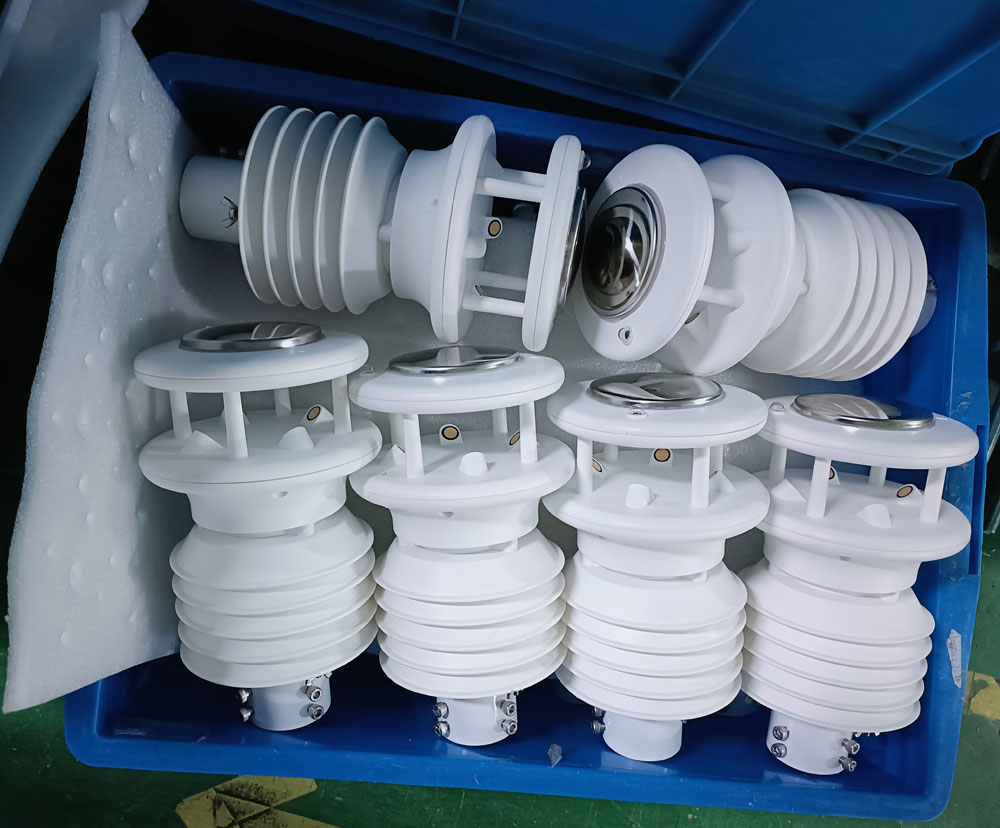
1. Agriculture and Planting: Monitors temperature, humidity, rainfall, and solar radiation to optimize irrigation, planting, and harvesting plans. Helps farmers assess frost risk, soil moisture needs, and solar energy for crops.
2. Photovoltaic Power Plants: Tracks solar radiation, temperature, and wind conditions to maximize solar panel efficiency and schedule maintenance (e.g., cleaning panels after rainfall).
3. Disaster Monitoring: Provides real-time data on wind speed, pressure, and rainfall to support tsunami, wildfire, and hurricane warning systems, enabling early alerts and evacuation planning.
4. Home and Gardening: Helps homeowners and gardening enthusiasts track local weather, protect plants, plan outdoor activities, or adjust home climate control systems.
5. Scientific Research: Provides accurate data for meteorological studies, climate monitoring, and environmental analysis, often integrated into larger weather networks.
6. Outdoor Recreation: Provides ultra-local weather data for sports enthusiasts, hikers, and event planners to ensure safety and preparedness.
7. Smart Cities and Environmental Monitoring: Tracks air quality, wind conditions, and rainfall to predict pollution spread and manage urban infrastructure.
8. Environmental Monitoring: Deployed in forests, wetlands, and highland areas for long-term climate observation.
9. Engineering and Mining Site Monitoring: Ensures on-site safety and environmental compliance during construction or mining operations.
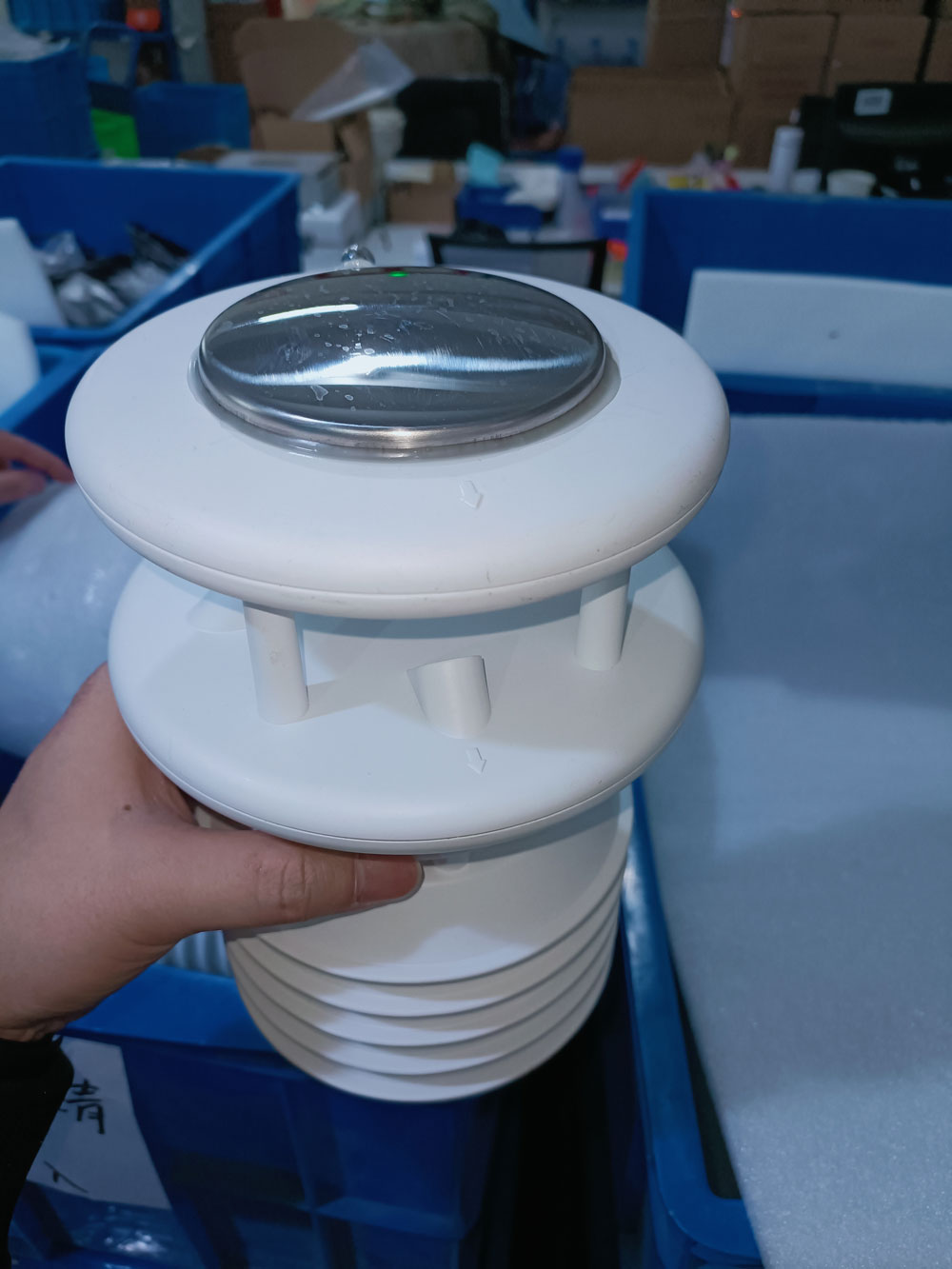
The 7-in-1 remote solar outdoor weather station is an efficient, intelligent, and reliable weather monitoring solution with high precision and low maintenance requirements. Integrated with sensors for wind speed, wind direction, temperature, humidity, atmospheric pressure, rainfall, and solar radiation, the station provides comprehensive data to support decision-making. Its solar-powered design and remote communication functions make it suitable for a variety of scenarios, including agriculture, energy, environmental protection, disaster management, home gardening, and scientific research. With robust components such as the integrated sensor kit, solar panels, and communication modules, these weather stations can reliably operate under harsh conditions.
NBL-W-HPRS-Solar-Radiation-Sensor-Instruction-Manual-V3.0.pdf
NBL-W-RS-Rain-sensors-instruction-manual-V4.0.pdf
NBL-W-LBTH-Atmosphere-temperature-humidity-and-pressure-sensor-instruction-manual-V4.0.pdf
NBL-W-DS-wind-direction-sensor-Manual.pdf
NBL-W-SS-Wind-Speed-Sensors-Instruction-Manual-V4.0.pdf
All-in-One-Ultrasonic-Weather-Sensor-Instruction-Manual.pdf
NBL-S-THR-Soil-temperature-and-moisture-sensors-Instruction-Manual-V4.0.pdf
Related recommendations
Sensors & Weather Stations Catalog
Agriculture Sensors and Weather Stations Catalog-NiuBoL.pdf
Weather Stations Catalog-NiuBoL.pdf
Related products
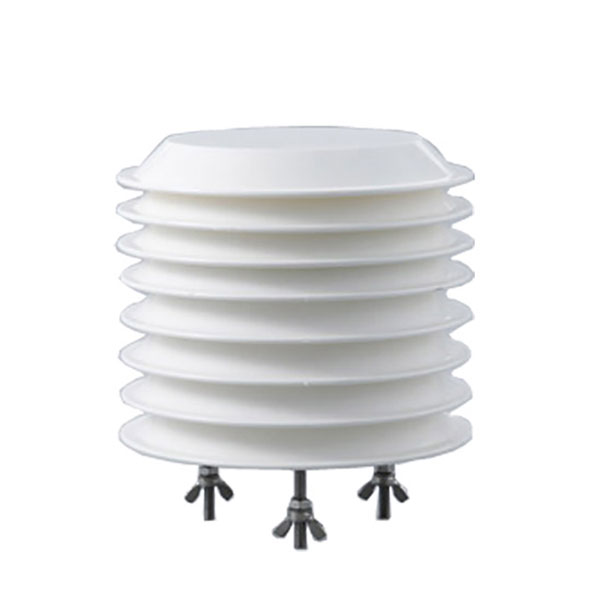 Combined air temperature and relative humidity sensor
Combined air temperature and relative humidity sensor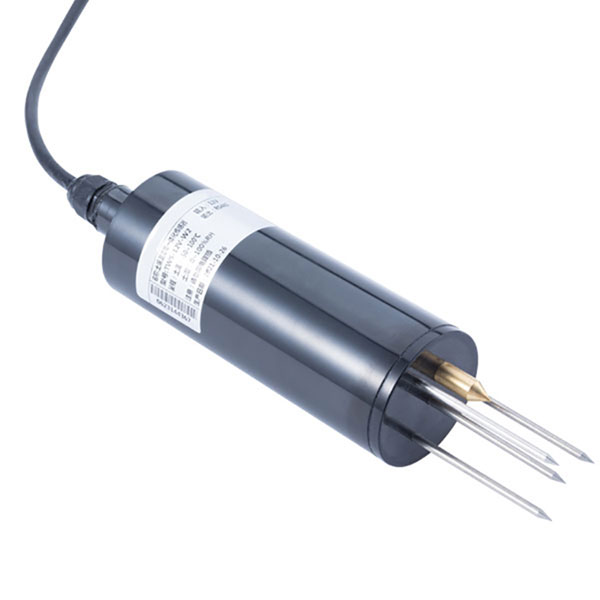 Soil Moisture Temperature sensor for irrigation
Soil Moisture Temperature sensor for irrigation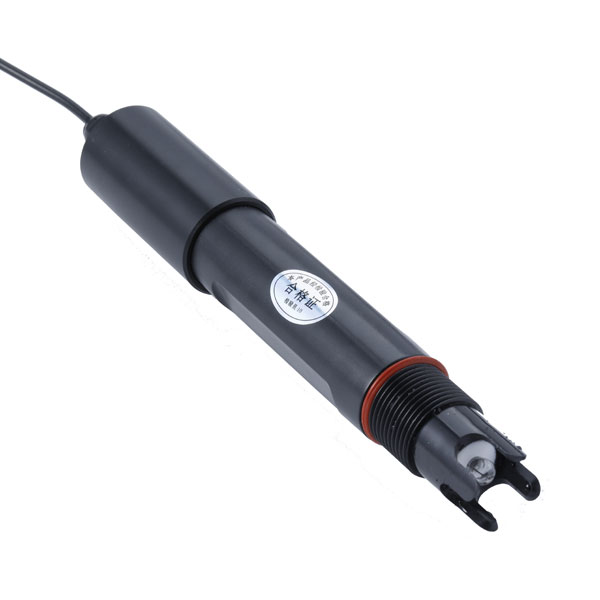 Soil pH sensor RS485 soil Testing instrument soil ph meter for agriculture
Soil pH sensor RS485 soil Testing instrument soil ph meter for agriculture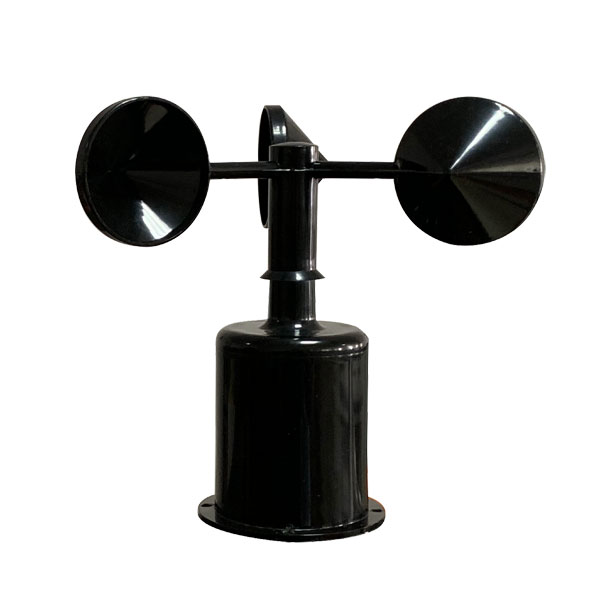 Wind Speed sensor Output Modbus/RS485/Analog/0-5V/4-20mA
Wind Speed sensor Output Modbus/RS485/Analog/0-5V/4-20mA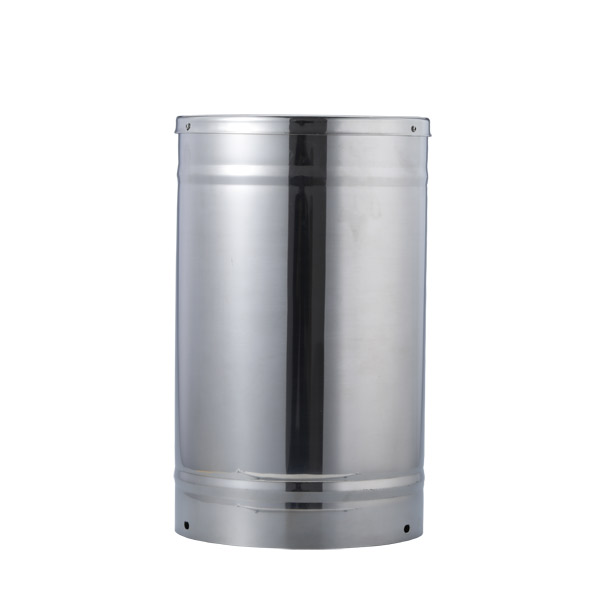 Tipping bucket rain gauge for weather monitoring auto rainfall sensor RS485/Outdoor/stainless steel
Tipping bucket rain gauge for weather monitoring auto rainfall sensor RS485/Outdoor/stainless steel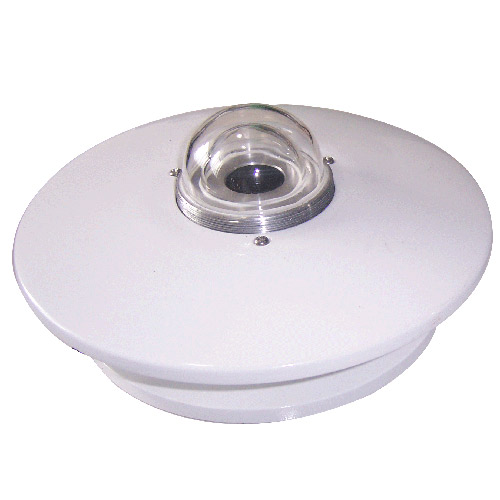 Pyranometer Solar Radiation Sensor 4-20mA/RS485
Pyranometer Solar Radiation Sensor 4-20mA/RS485
Screenshot, WhatsApp to identify the QR code
WhatsApp number:+8615367865107
(Click on WhatsApp to copy and add friends)
